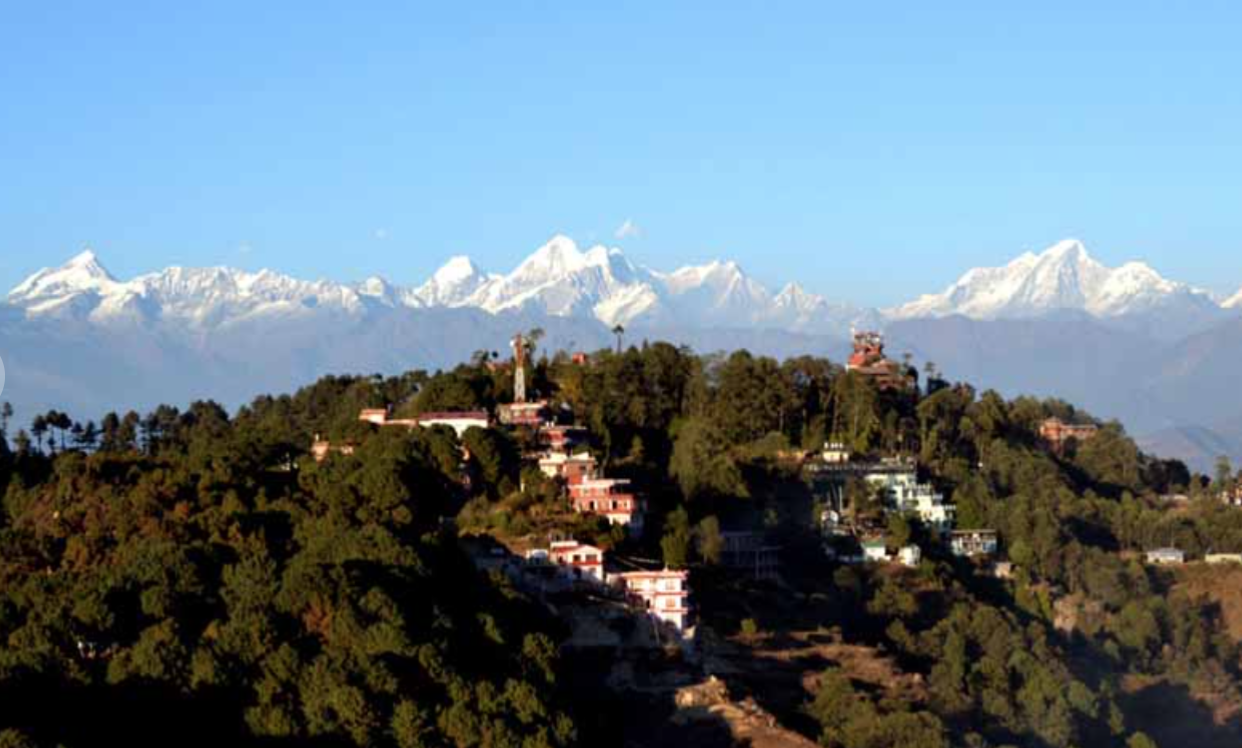
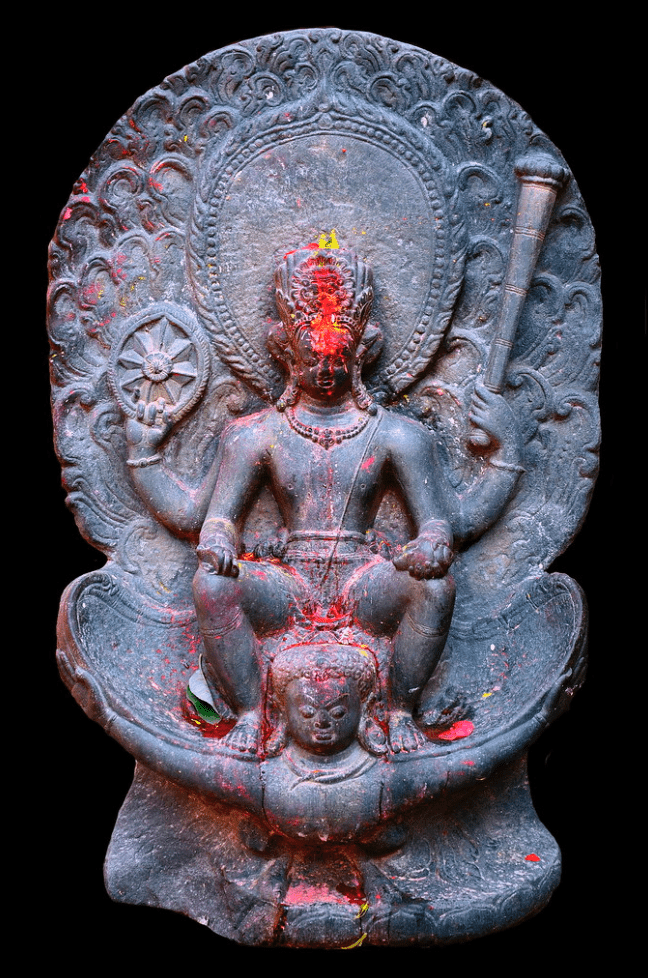
High up on a hill overlooking the Kathmandu valley is a small village which guards the oldest temple in Nepal. No one knows for sure how old the temple is. The famous inscription on the Western Gate was written by King Manadeva in 464 CE. The Hindu temple is dedicated to Lord Vishnu and some of his friends, in the vast pantheon of Hindu gods and goddesses.
Legend tells us in ancient times, a cow herder bought a beautiful cow which gave large amounts of milk. Every day it grazed in the hills of Bhaktipur, but one day it stopped giving milk. The owner was puzzled and one morning climbed up the mountain with the original seller of the cow friend to watch the cow as it grazed. They were amazed to see a little black boy climb out from under a tree, drink the milk from the cow, and return to hide in the tree. Enraged, the owner of the cow searched for the boy, but could not find him. They believed the boy must be the devil and tree must be its home. They cut down the tree, and the tree began to bleed human blood. Afraid they had committed a heinous crime, they saw Lord Visnhu emerge from the tree. Lord Vishnu thanked the owner for freeing him of a sentence on Earth where he had committed a crime of stealing cow milk to survive. The two men were great admirers of Vishnu and swore to worship the place where the tree stood. They built the temple Changu Narayan temple on the site. To this day their descendants live there and care for the site.
We saw this beautiful 7th century stone sculpture of Vishnu riding on Garuda. Garuda is an enormous mythical bird-god that’s half human, half eagle.
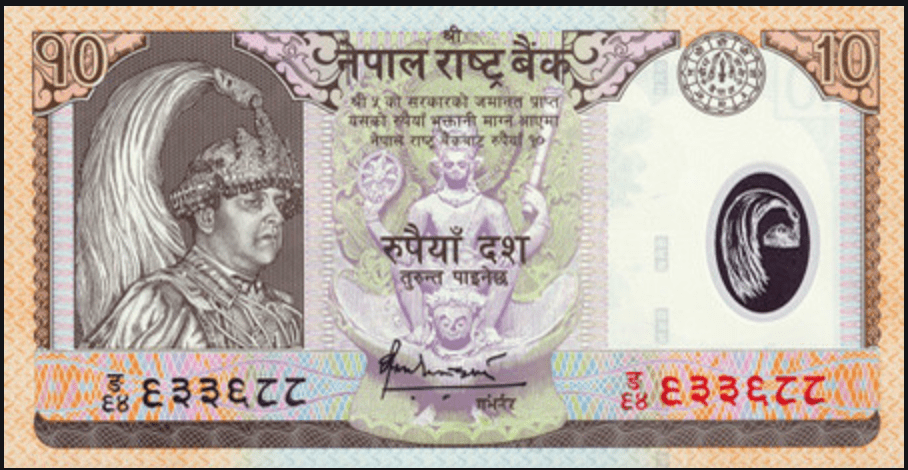
See the famous statue of Vishnu riding the Garuda, on the Nepali 10 rupee note?
This is about $0.10 cents. Yep, it’s all paper money here.
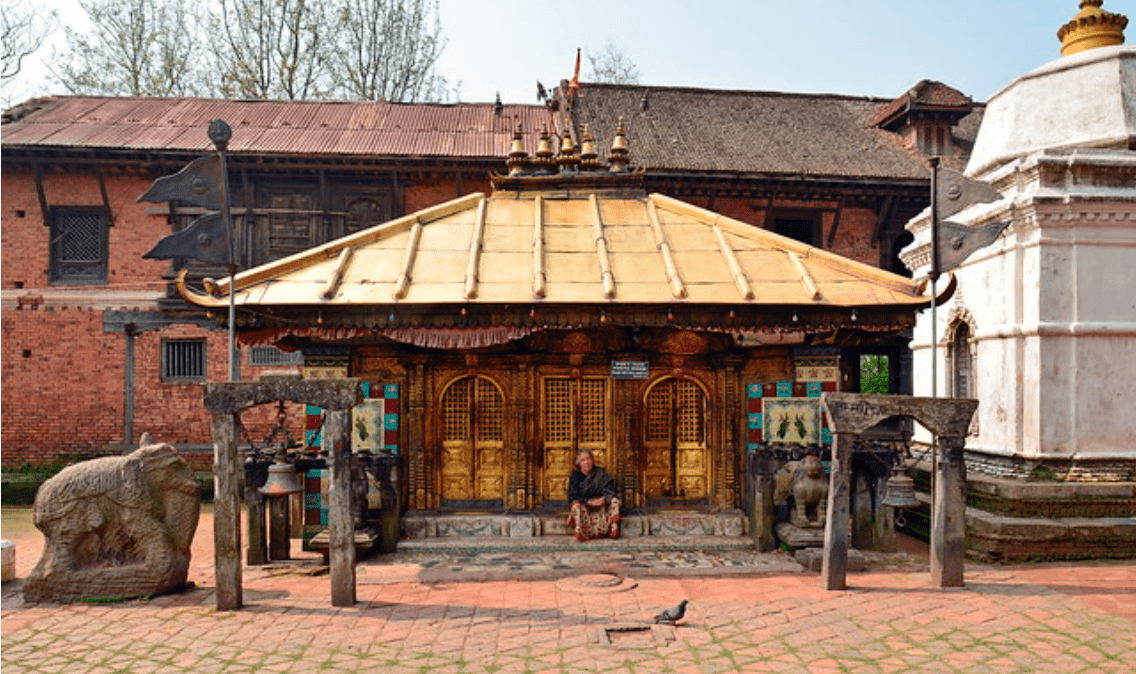
This small temple to the side of the Vishnu temple is dedicated to the headless Goddess Chhinnamasta.
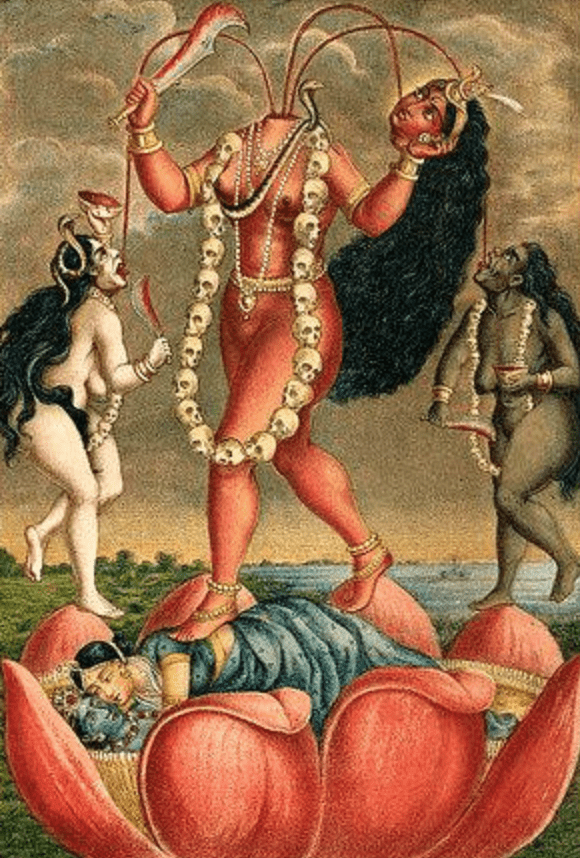
The goddess Chhinnamasta beheads herself, offering her own blood to nourish the world. Yep. Goddess Chinnamasta is also known as Chhinnamunda in Buddhism. She’s a wrathful aspect of the goddess Parvati, wreaking havoc and destruction. She stands upon Kama and Rati, the god of love and his wife, who are making love upon a lotus. She is part of the Tantric pantheon of Hinduism and Buddhism. Her power combines the themes of sexuality, death and regeneration.
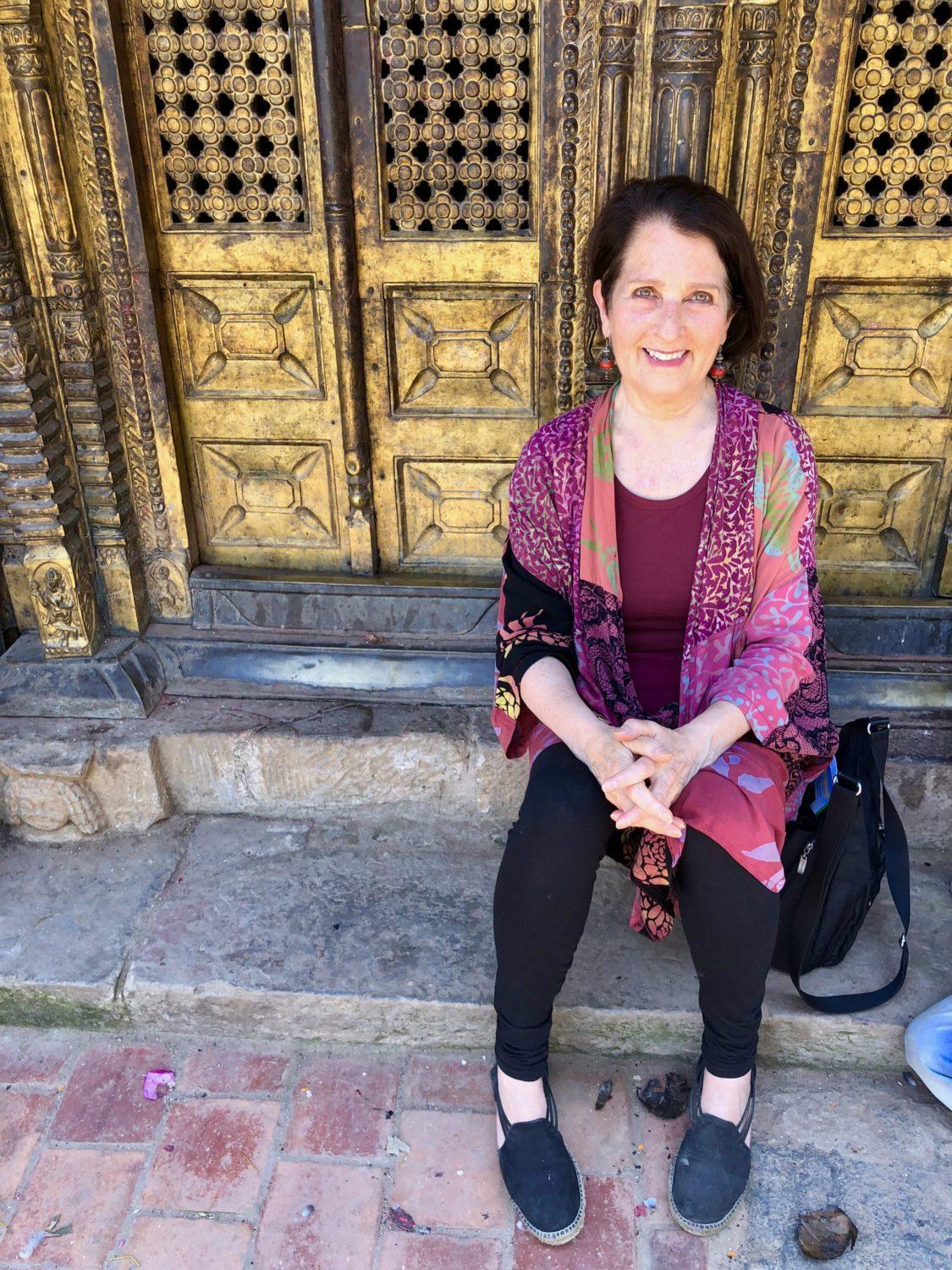
Sitting on the threshold of the Chhinnamasta temple. I’m just enjoying drinking the wild goddess energy up into my spine. Yes, it was quite extraordinary, a joyful, wild, sexual energy. If you come for a visit we will go there.
Chhinnamasta is a goddess of contradictions. She symbolises two aspects of Devi: a life-giver and a life-taker. She is both a symbol of sexual self-control, and an embodiment of sexual energy and gift, depending upon interpretation. She represents death, temporality, and destruction as well as life, immortality, and recreation. The goddess conveys spiritual self-realization and the awakening of the kundalini – spiritual energy. The legends of Chhinnamasta emphasize her self-sacrifice – sometimes coupled with a maternal element – sexual essence, and self-destructive fury.
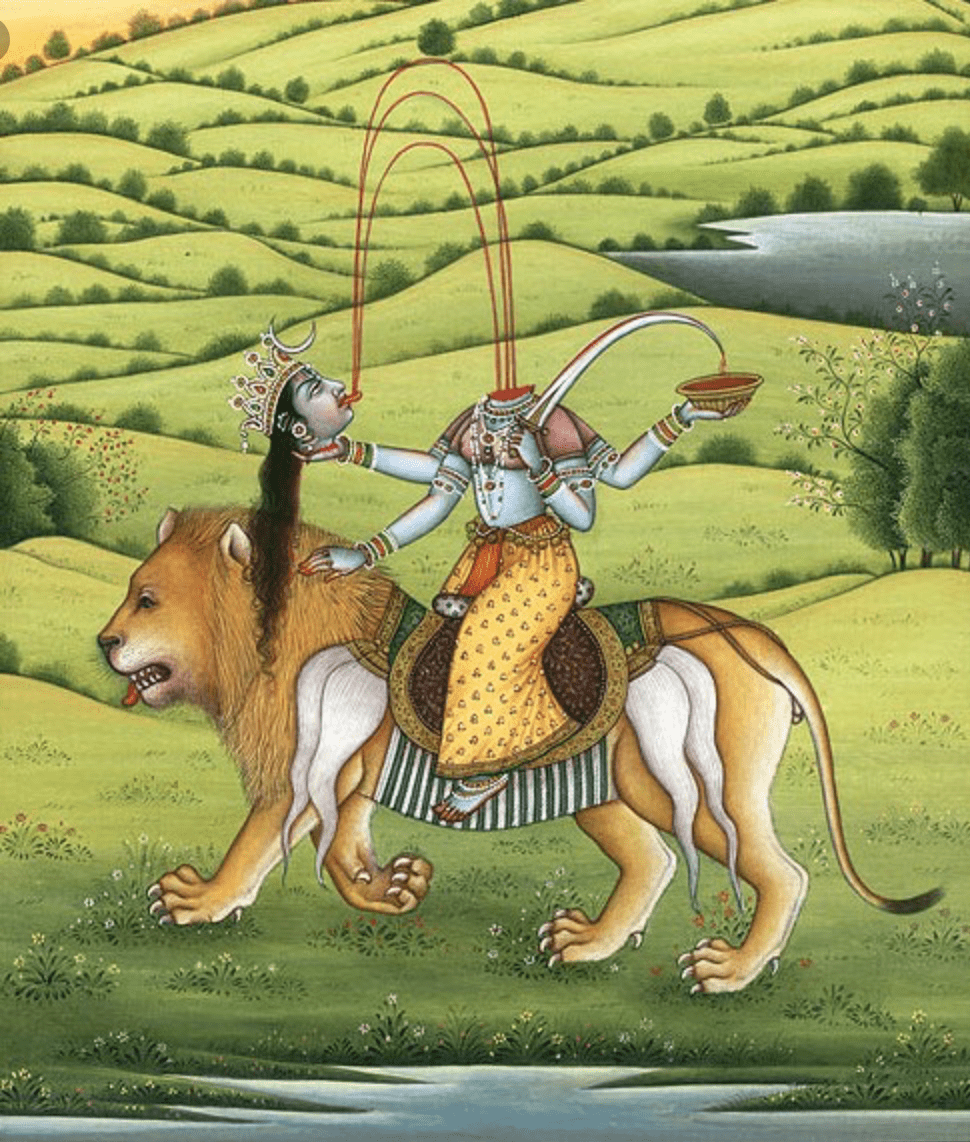
Sometimes the Goddess Chinnamasta rides a lion. She is the sixth of the ten aspects of Parvati, representations of transcendent knowledge and power. Chinnamasta represents the continued state of self-sustenance of the world in the continuous cycle of self-destruction and self-renewal. She is usually a naked or partly naked, holding her own severed head in hand and drinking her own blood.
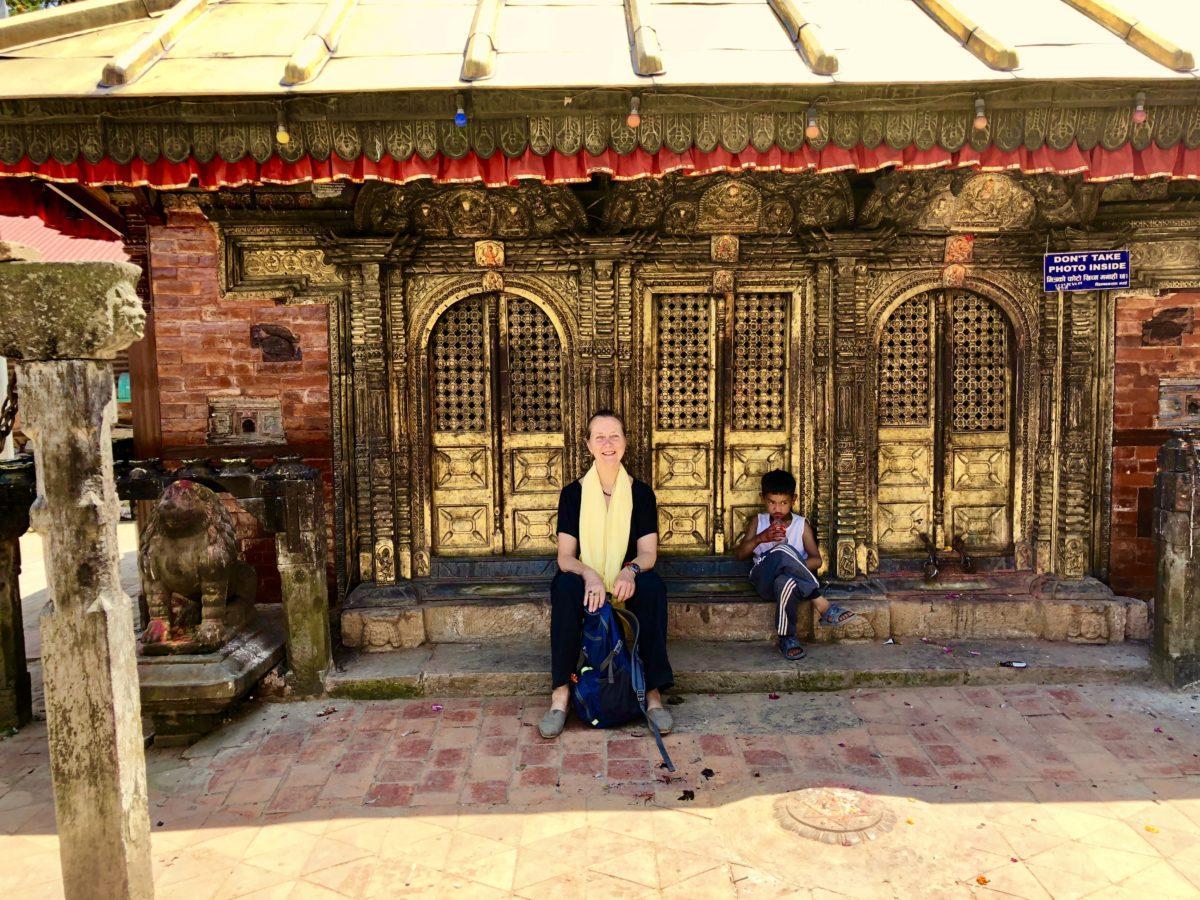
Lee and I sat at the Chhinnamasta temple for some time, just drinking in the energy. How would I describe the feeling in words? Very sexual, powerful, happy, joyful, generous, and a little scary in a fun and exciting way. Yep. The nourishment from Chhinamasta symbolizes renewal of the universe.

Chinnamasta is the frightening aspect of Parvati. Parvati is the beautiful Hindu goddess of fertility, love and devotion; as well as of divine strength and power. A nice goddess with a wrathful aspect, you never want to make Parvati mad! Nope. She is the wife of Shiva. Shiva is “The Destroyer” within the Trimurti, that Hindu trinity along with Brahma and Vishnu.
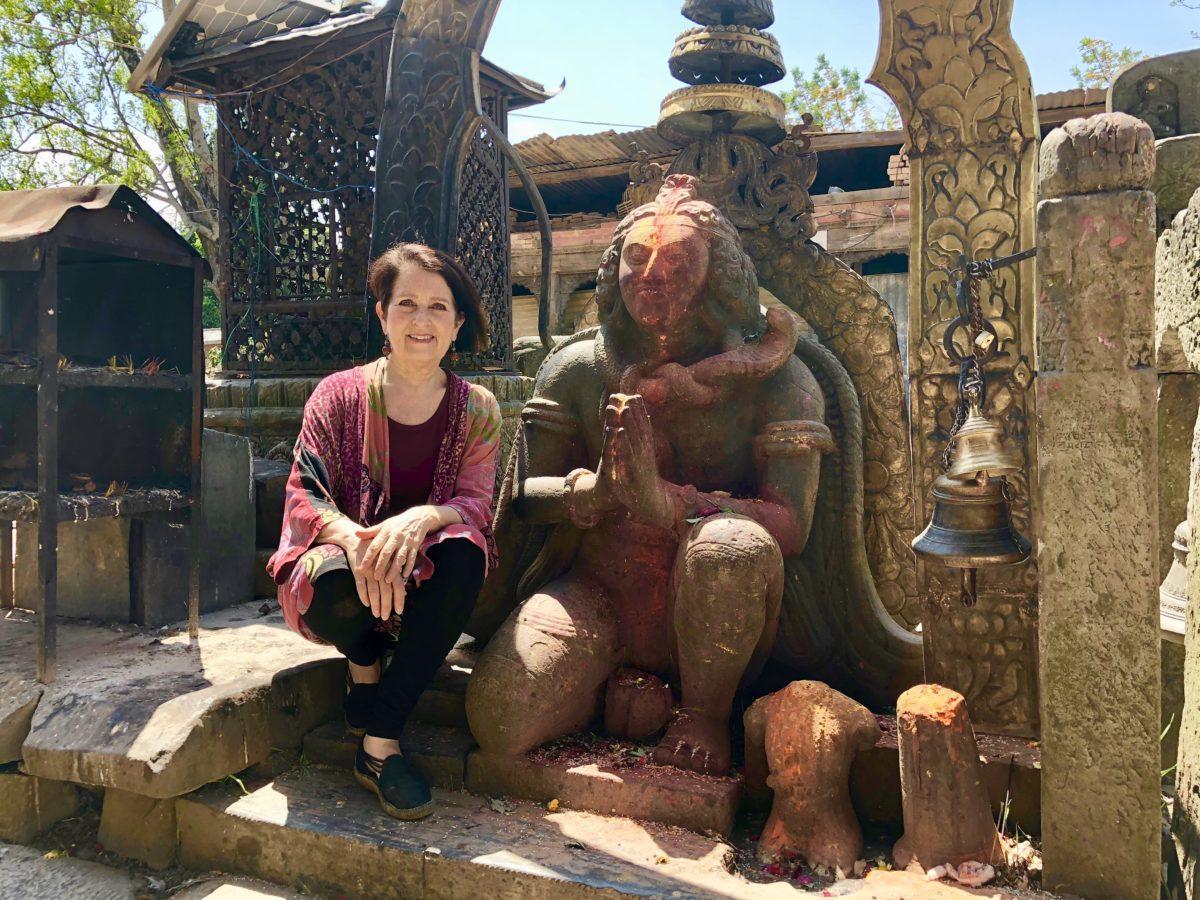
This is a magnificent life-sized 5th century statue of Garuda (The God that’s half bird half man) on his knees in front of the main doors of the temple. Inside the temple is an amazing 10-headed and 10-armed 5th century stone icon of Lord Vishnu.
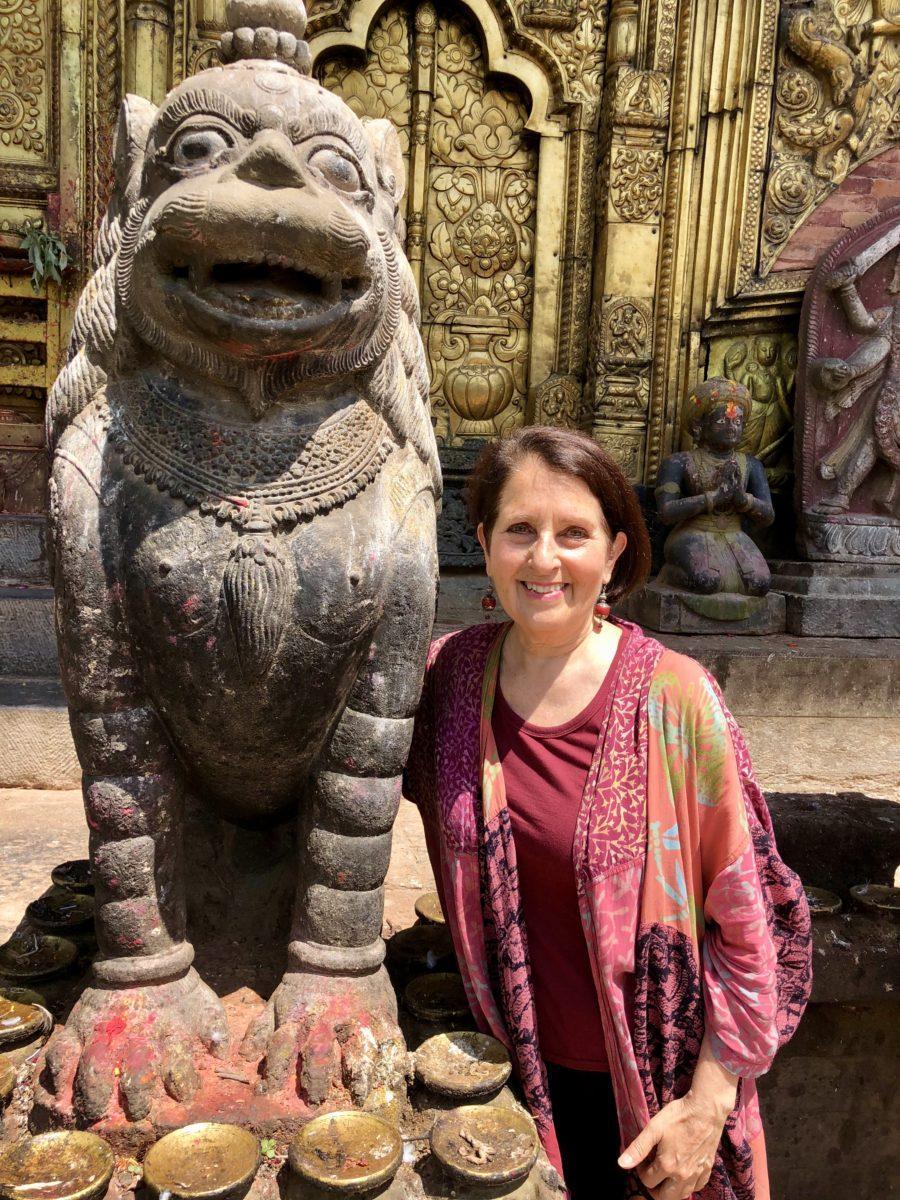
This is one of several huge lions and dragons guarding the Changu Narayan Temple honoring Vishnu. I like his paws. Some say the temple was built by Licchavi King Haridatta Varma around 325 CE. It has undergone many reconstructions through the years.
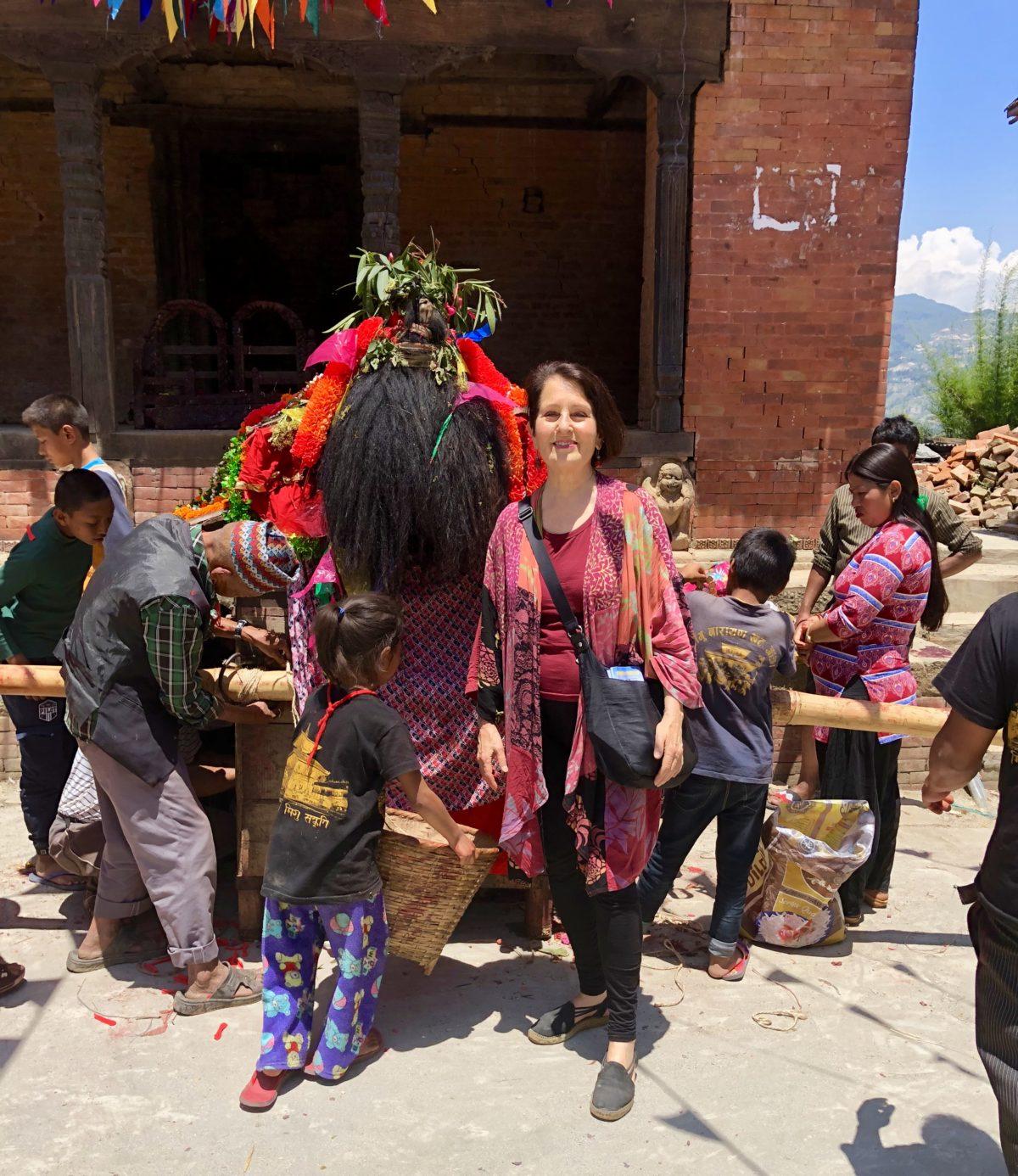
When we walked through the village, everybody was working to prepare for a ceremony in which this wooden altar holding the sacred image of the Goddess, will be carried in a bamboo-poled litter, like a palanquin.
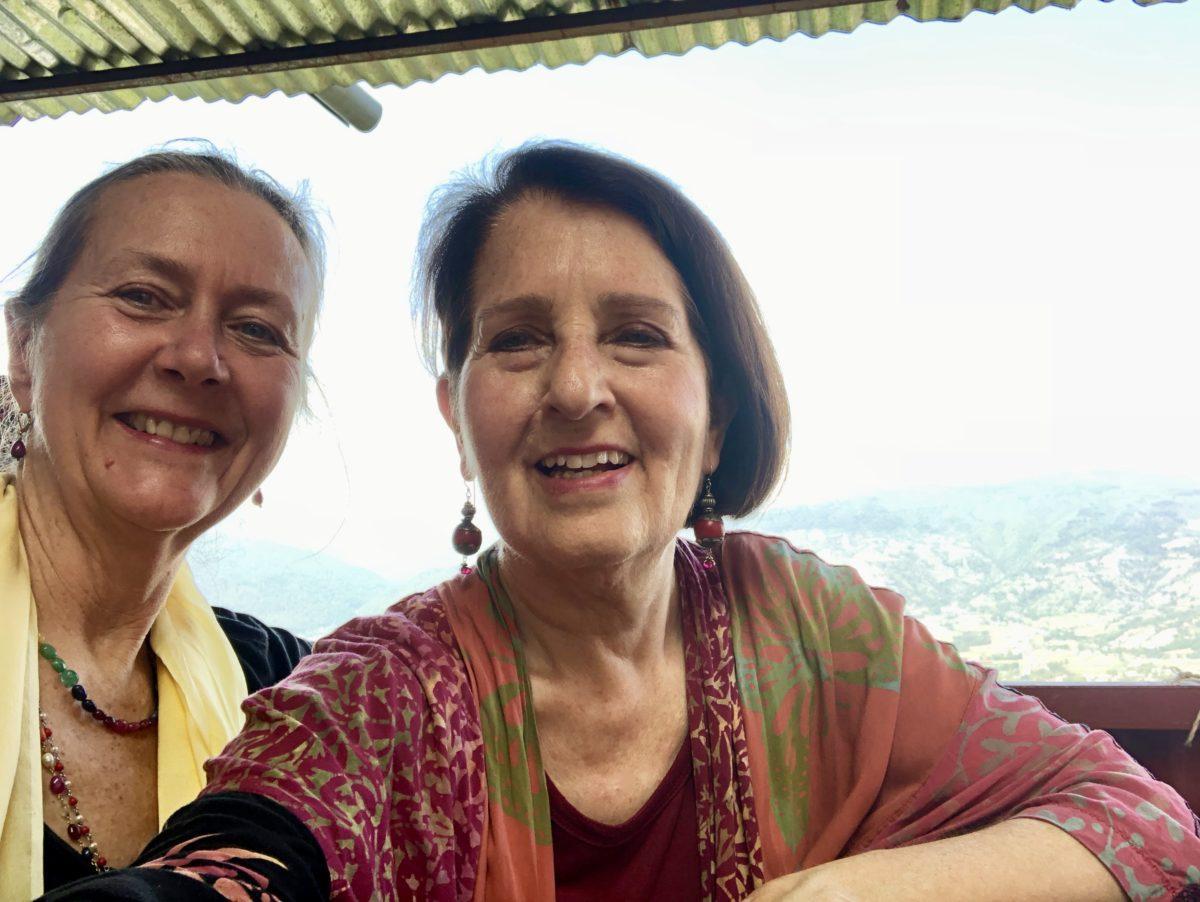
My friend Lee Schwing is visiting from India for another week. We had so much fun fun touring the temples, and ducked into a small restaurant overlooking the mountain for lunch.

The safest looking thing on the menu was momos with spicy sauce. We ordered two flavors: vegetarian and cheese. They were freshly made and very delicious.
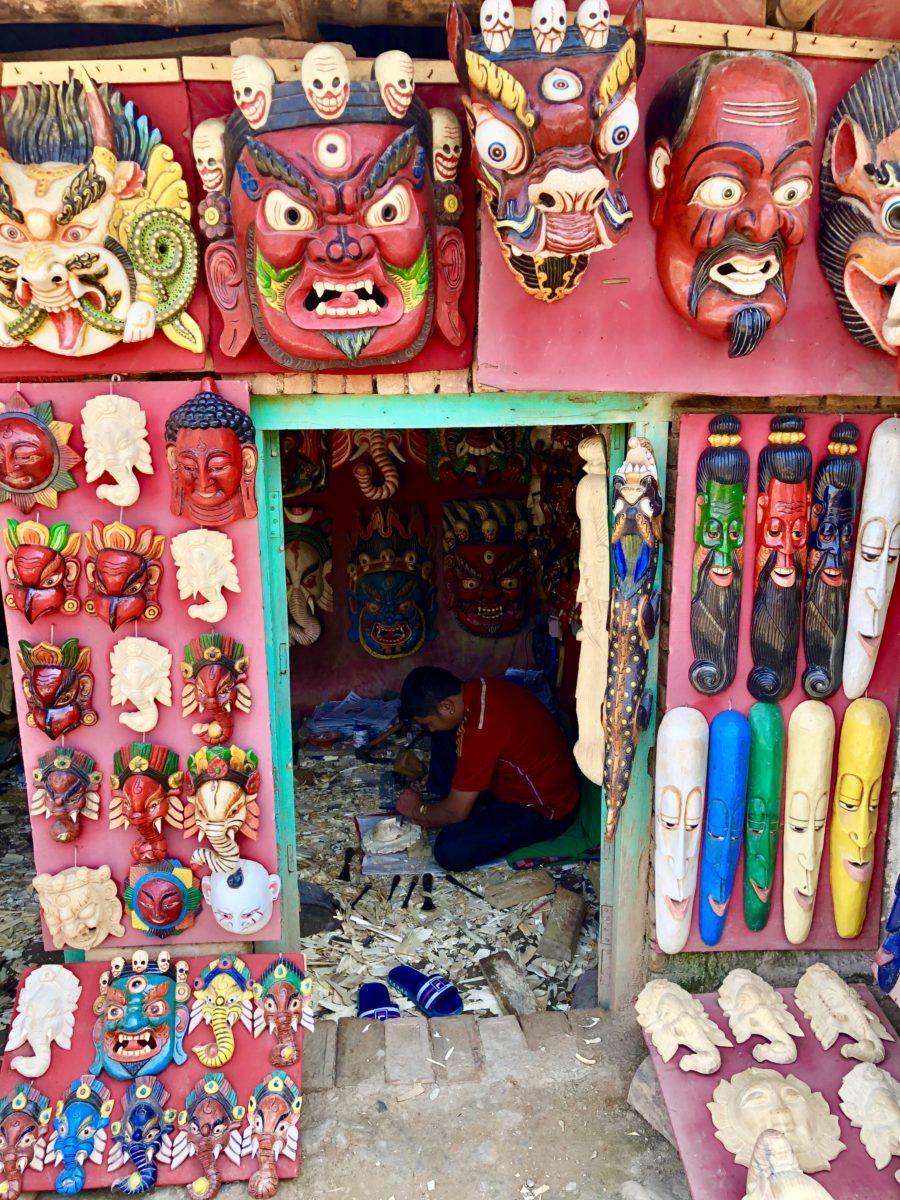
At the end of the day, as we walked out of the village of Changu Narayan, we passed this amazing mask carver. Working with chisel and knife, he is clearly very skilled and prolific, his studio floor covered with sawdust and wood chips.
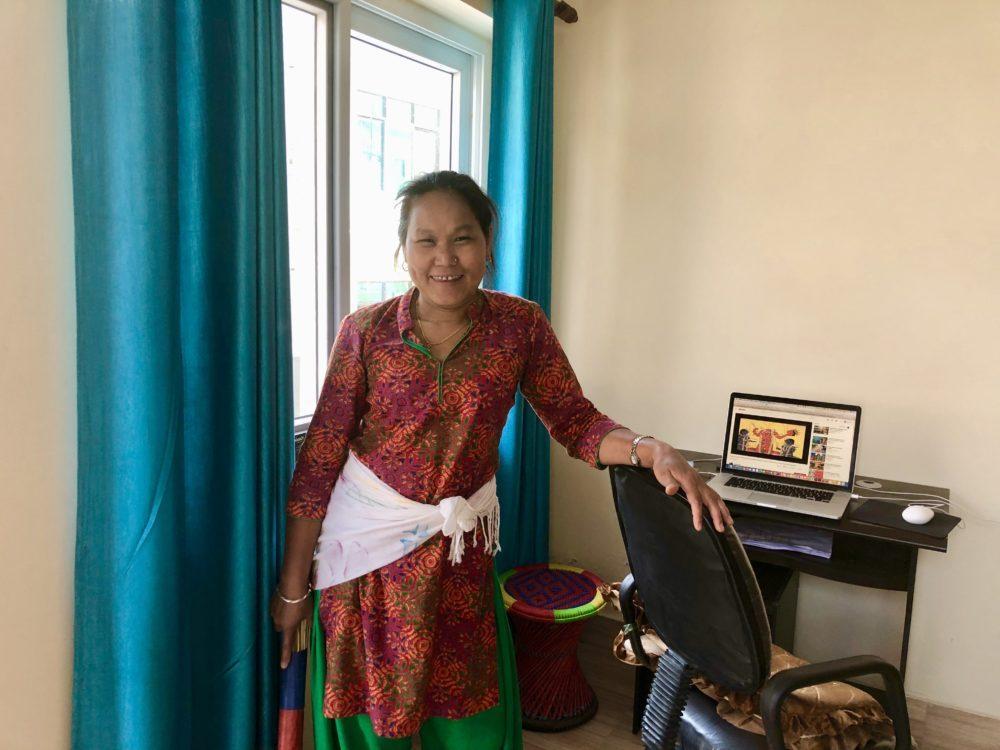
Ambica came to clean our house today. She washes everything, sweeps, mops, does the laundry, and hangs it out in the sun. There’s no washing machine in the building, and she’s very good at hand-washing laundry. It is so much cleaner and fresher than machine-washed. She comes once a week and charges $2.50 per week. She was nervous about letting me take a picture. After she agreed, I showed it to her and she liked it! I feel very fortunate to have her help.
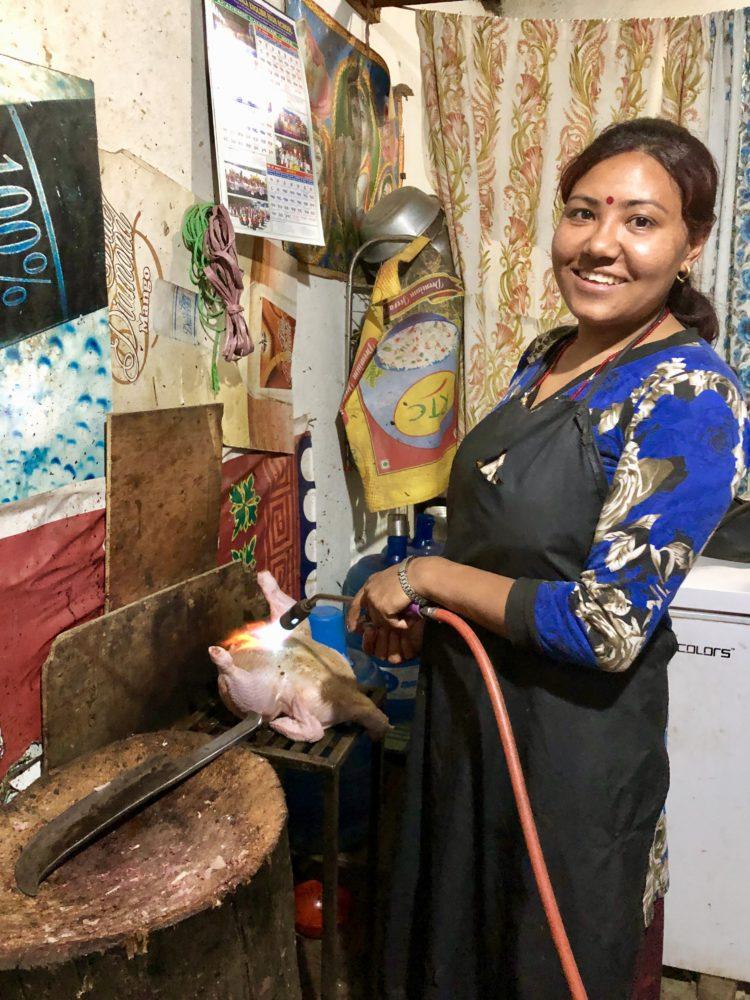
On my walk home yesterday, I heard a strange sound. I turned around and my neighbor who has a little shop was blow-torching a chicken for dinner. Yep. Nepali, Bhutanese, and Indian kitchens do not have ovens. The kitchen consists of a two-burner counter-top stove connected to a portable cannister of petrol that you can pick up at any corner store.
How do you cook a whole chicken without an oven? Many people cut the chicken into little pieces and cook it on the stovetop. Or you can blow torch it. They also use a blow-torch to burn off the feathers.
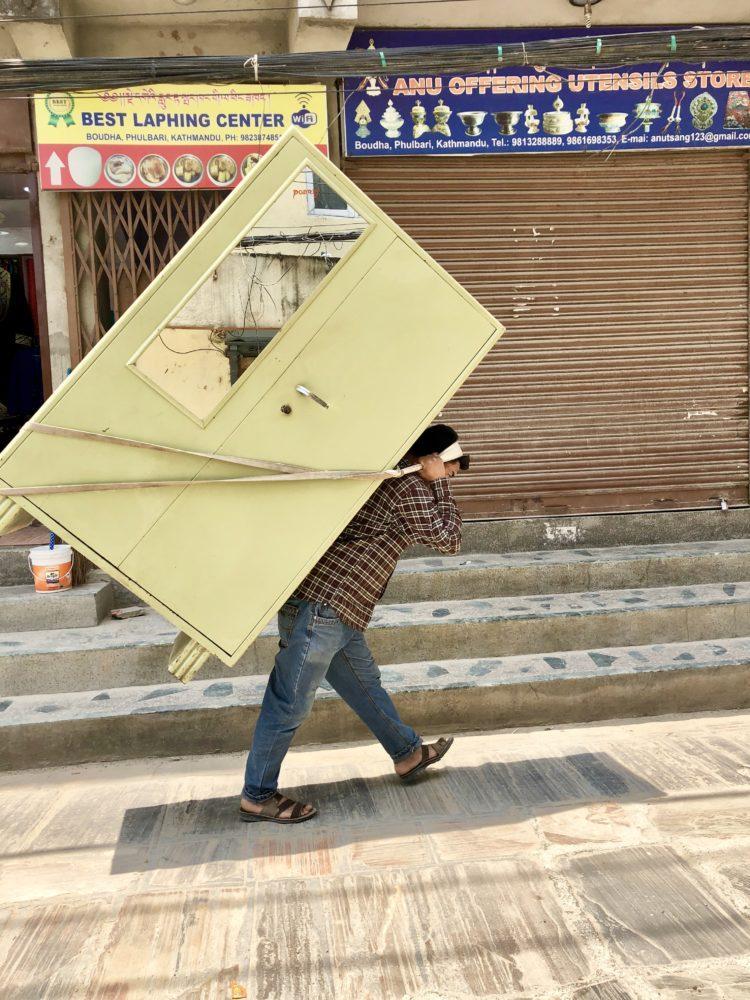
This man delivered a closet today. The stores behind him are typical. Laphing is a Tibetan spicy mung bean noodle street food. The other store sells Buddhist implements used in every monastery and home altar.
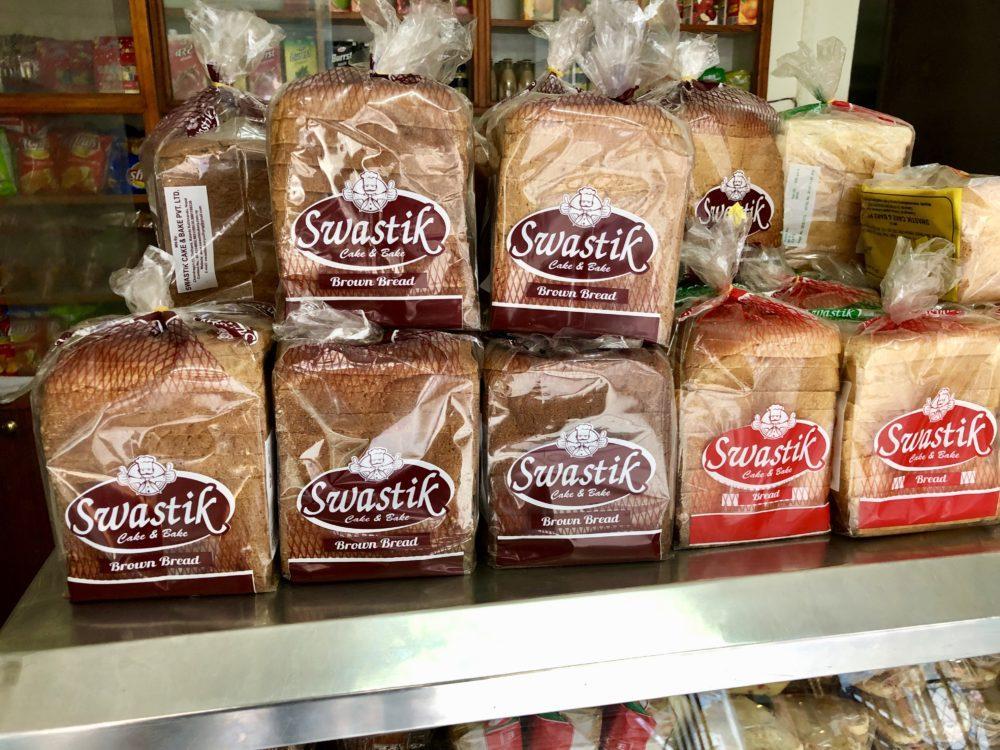
Swastik bread comes in two flavors, brown and white. The name Swastik is happy here, because the swastika is a sacred symbol. “Swastika” is a Sanskrit word meaning ‘Well Being’, ‘Good Existence, and ‘Good Luck’.
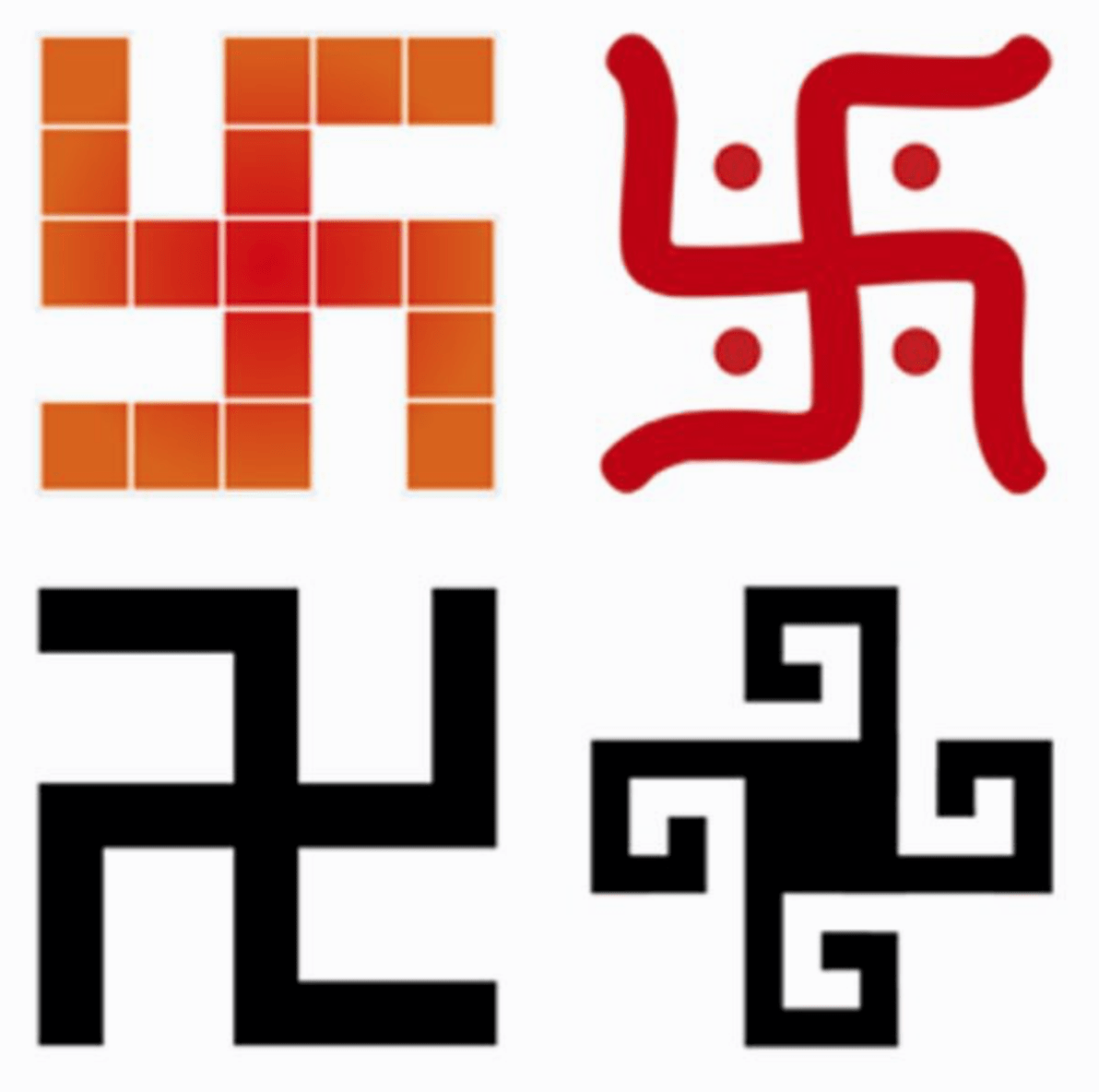 Swastika has a deeper meaning of ‘Permanent Victory’. Like any symbol it can have positive and negative meaning depending on how it is drawn. Left or right. In Hinduism, the right-hand swastikas on the upper half of this image are a symbol of the God Vishnu and the Sun. The left-hand swastikas in the lower part are symbols of Kali and Magic.
Swastika has a deeper meaning of ‘Permanent Victory’. Like any symbol it can have positive and negative meaning depending on how it is drawn. Left or right. In Hinduism, the right-hand swastikas on the upper half of this image are a symbol of the God Vishnu and the Sun. The left-hand swastikas in the lower part are symbols of Kali and Magic.

Today’s delicious (and healthy) budget lunch was a Dahl, Spinach, and Chick Pea Chapati. Total price 170 rupees = $1.70.
I was quite amazed at this construction crew making cement to hoist up to the 4th story. They’re mixing stones, sand, and water in the drum, then the elevator takes it up. This is the low-tech way of building, using lots of teamwork and muscle.
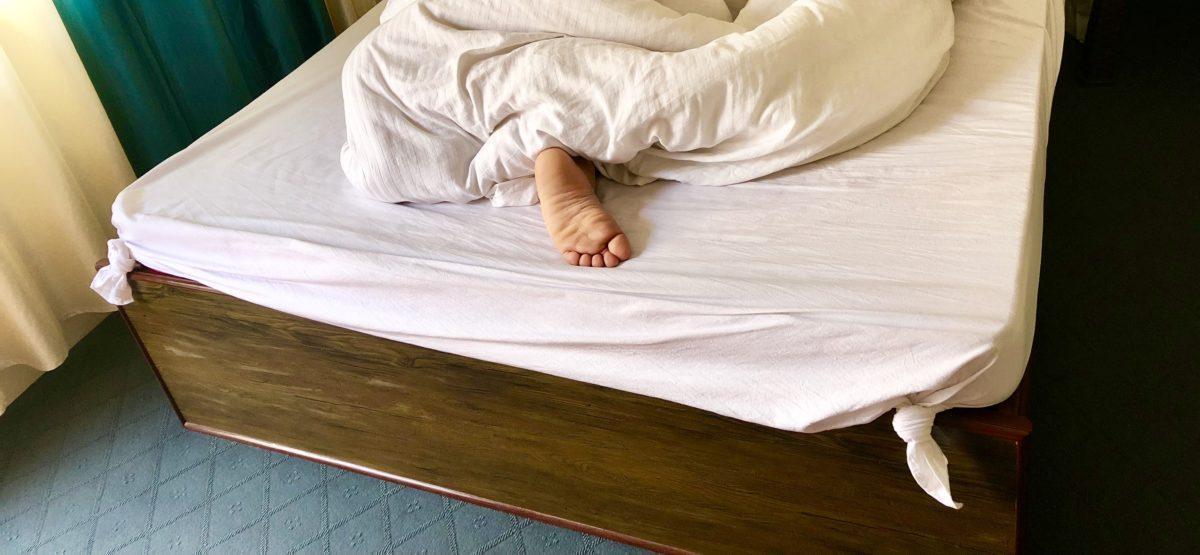
No fitted sheets. Here in Asia we don’t need fitted sheets. Top and bottom sheets are identical. Just tie the corners and slip them underneath. I pulled the knots out to show you. Yep. Think about it.
Update on Book Project
My book projects are transforming. The Buddha series is now called “Buddha Speaks”. Last week it was five book projects. One of my brilliant advisors suggested a 6th book that pulls it all together for a publisher. Yep. The book wll be revealed soon. It is my most challenging work so far. For this book my internal practice must take a quantum leap deep inside. I’m asking for everyone’s support. Yes, I’m working on it every day, and hope to finish the manuscript in about two months. Please say a prayer for me…
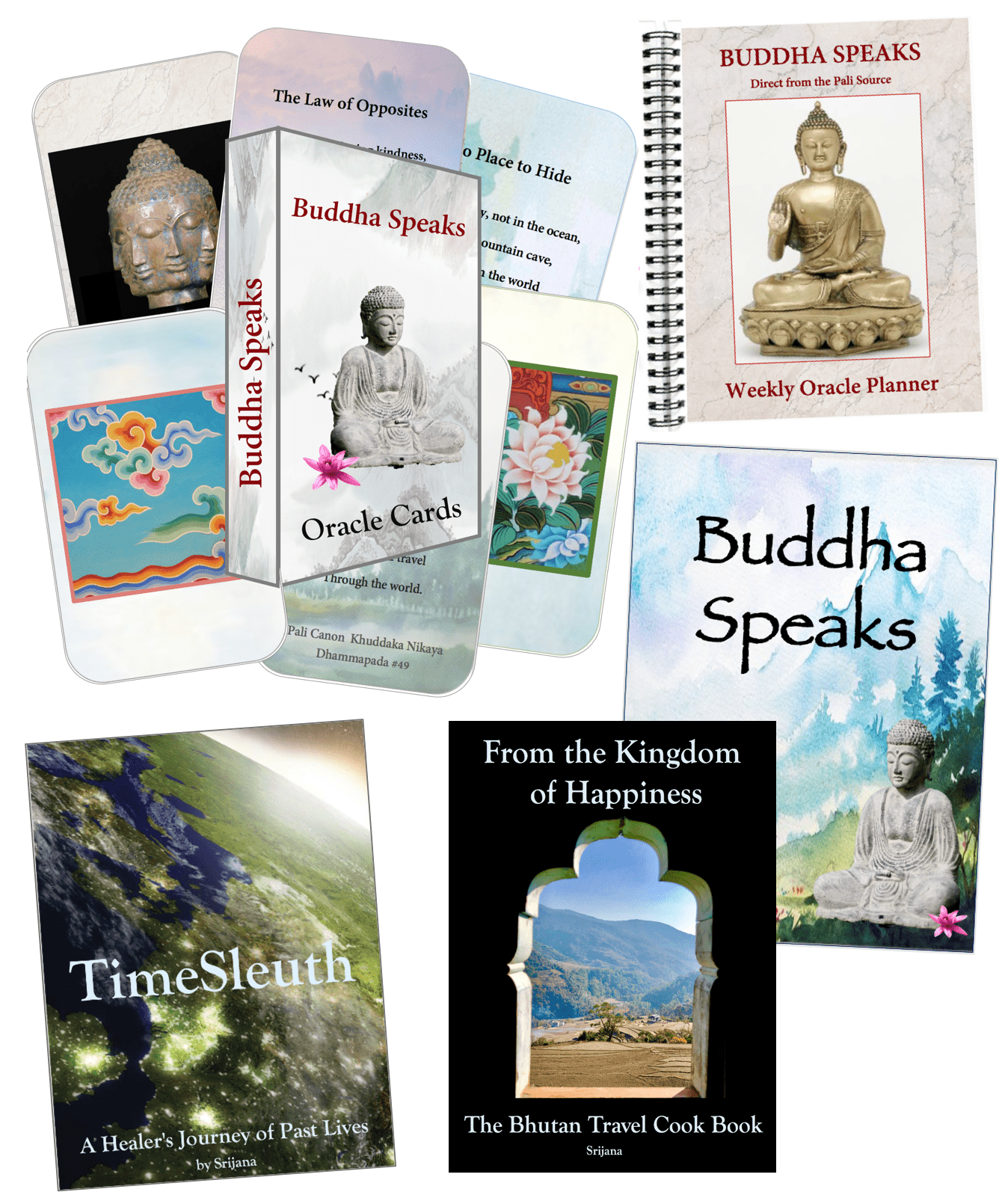
Thanks for checking in. Who knows what will happen next week?
I hope to see you then! Please be well and happy!
Jane


